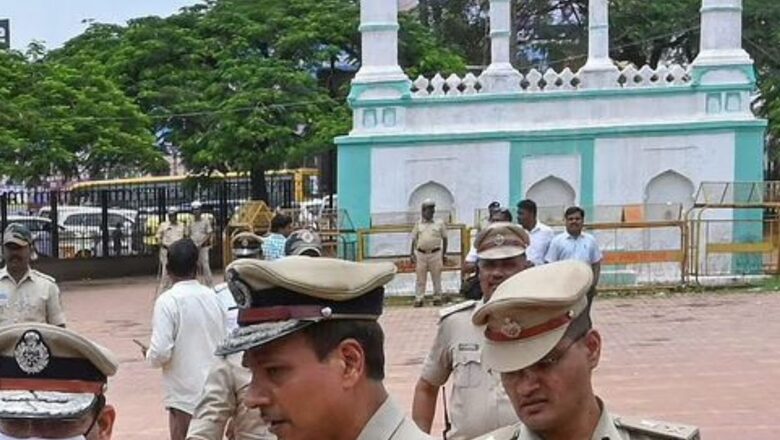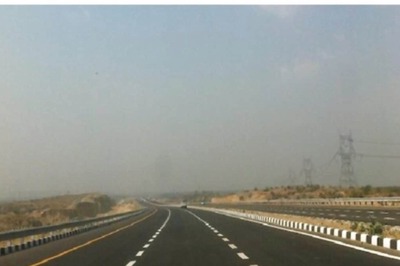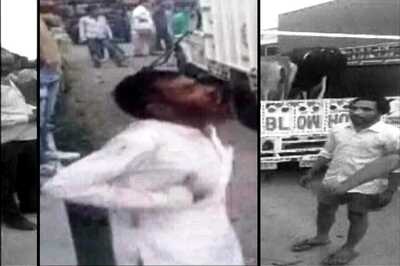
views
The Karnataka High Court, in a late-night hearing on Tuesday, upheld an order of the Dharwad municipal commissioner allowing the Ganesh Chaturthi festival to be held at the Hubballi Idgah maidan. Justice Ashok S Kinagi held that the property belonged to the Dharwad municipality and Anjuman-e-Islam was only a lease holder for a period of 999 years at a fee of Re 1 per year. The municipal commissioner’s order was challenged in the court by Anjuman-e-Islam, even as the Supreme Court was hearing the issue of the festival being allowed at the Chamrajpet Idgah maidan in Bengaluru. Anjuman-e-Islam had claimed that the property in question was protected under the Places of Worship Act, 1991, which says no religious place of worship can be converted. The high court said in the case of the property in question, it was not a religious place of worship and was allowed for prayers only during Bakrid and Ramzan. During other times, it was used for purposes like a marketplace and a parking lot.
The Supreme Court order of status quo in the Bengaluru Chamrajpet ground was also not applicable to this case, the high court said. The Chamrajpet issue involves a dispute about the ownership of the property, whereas the Hubballi ground belongs to the municipality, which Anjuman-e-Islam has also acknowledged, the court pointed out.
News18 takes a look at the controversy over the place and earlier flashpoints:
The history
One of the three in Hubbali, the Idgah maidan has been traditionally used by local Muslims to offer prayers on Ramzan and Bakrid. According to some old reports, several parties held meetings in the ground before Independence when the land was owned by one Moopana Basappa Narool, Esar Vanch Padri, and the Basel Mission at various times in the nineteenth century.
In the early years of the 20th century, the land was acquired by the Hubbali Municipality. In 1921, the Anjuman-e-Islam petitioned the municipality to allow Muslims to hold prayers in the maidan, which was agreed to and the land was leased to the Anjuman for 999 years, the Indian Express reported. The lease agreement was subsequently confirmed by the government of the Bombay Presidency.
The Anjuman was allowed to build shops on the land under specified terms and conditions in the 1960s by the government. However, when it tried to construct a commercial complex at the site in 1972, the move was legally challenged on the grounds that such a construction was not allowed by the 1921 lease agreement.
After years of litigation, the Supreme Court confirmed the order of the Karnataka High Court and the lower courts in 2010, ruling that the Idgah maidan was the Hubbali-Dharwad Municipal Corporation’s exclusive property, and the Anjuman had the licence only to hold prayers in the ground twice a year, and not to build any permanent structure on it.
Flag-hoisting row
The Ramjanmabhoomi agitation of the 1990s saw the battle over the land take a communal turn. The then Congress government halted an attempt to raise the National Flag at the ground in 1992, saying the move would flag communal tensions and since the property was “disputed” and subject of ongoing litigation, the flag could not be hoisted.
In 1994, the issue gained further currency when BJP leader Uma Bharti announced she would hoist the Tricolour at the maidan on Independence Day. Bharti and a group of supporters managed to enter the town despite a curfew and were arrested about a kilometre from the maidan. However, six people lost their lives in police firing, leading to tension in the town.
Since then, though litigation continued, no major incidents of communal violence have been reported and police continue to guard the contentious site.
Decoding the Places of Worship Act
During the hearing on Tuesday night, the high court rejected the Anjuman’s plea that the property was protected by the Places of Worship Act, 1991. It was noted that the ground was being used for parking vehicles, vending, etc., and that there was no record showing that it had been declared a place of worship.
It was the PV Narasimha Rao government that brought the 1991 Act at a time when the Ram temple movement was at a crescendo “to prohibit conversion of any place of worship and to provide for the maintenance of the religious character of any place of worship as it existed on the 15th day of August, 1947, and for matters connected therewith or incidental thereto”.
The Act bars the conversion, in full or part, of a place of worship of any religious denomination into a place of worship of a different religious denomination — or even a different segment of the same religious denomination, and declares that the religious character of a place of worship “shall continue to be the same as it existed” on August 15, 1947.
Read all the Latest Explainers News and Breaking News here




















Comments
0 comment